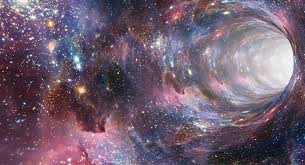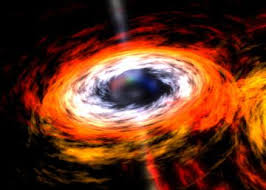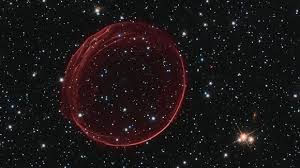THE TEN MOST INCREDIBLE THINGS ABOUT BLACK HOLES (II)
- planck
- Jul 28
- 4 min read
Black holes (BL) are, by far, the strangest and most fascinating real physical objects in the Universe. The laws of physics predict that these strange objects experience phenomena that completely defy the human brain's ability to visualize and understand. In this article, we'll explore ten of the strangest (and most unknown) phenomena surrounding these mysterious objects that populate our Universe.
6th) COMPLEMENTARITY: THE DOUBLE SIDE OF BLACK HOLES
This section explains a surprising aspect of NAs that, however, constitutes one of the most promising proposals to explain many of the paradoxes surrounding these objects. The key idea of the concept of complementarity is that the nature of the NA microstates depends on the reference frame of the object.
observer: an outside observer will observe thermal states while an observer near the horizon will observe vacuum states. This shows us a surprising reality: the nature of the microstates of a NA depends on the reference frame. At first glance this seems far-fetched however, this phenomenon is similar to well-established physical phenomena such as the Unruh effect. The complementarity of NAs would be due to the fact that experiments performed by both observers would show different results: from the reference frame of a distant observer, the interior of the NA does not exist, it is causally disconnected and there is no reference frame in which the interior can be described, far from the horizon there is a high density of states and the modes are so redshifted that the observer only observes a thermal bath, on the contrary, from the reference frame of an observer who passes the horizon the density of states is low, he only observes a smooth spacetime and nothing strange happens when crossing the horizon.
7th) INSIDE THE AN THERE ARE SPATIAL AND TEMPORAL SINGULARITIES
A Schwarzschild NA (eternal and non-rotating) has a singularity in time (space-like), however, a Kerr NA (with rotation) has a singularity in space (time-like). This means that if we take a NA at rest and apply a rotation to it, there will be a moment in which the "time-like" singularity transforms
into a "space-like" singularity. "Time-like" singularities are singularities in space, that is, there is a place in space where the definition of what we know as "space-time" ceases to make sense (we don't yet know what happens there). These types of singularities are mathematically tractable: in certain cases, theories such as string theory allow them to be avoided. "Space-like" singularities are singularities in time, that is, the "point" where the singularity resides is not a place but an instant in time. These types of singularities are not yet mathematically tractable, and their resolution is likely linked to the mystery of the nature of time.
8th) THE AN CAN COMMUNICATE WITH ANOTHER SPACE-TIME
Einstein himself and his student Rosen made a surprising discovery: if we take the equations of general relativity for a Schwarchild NA and apply a mathematical technique called analytic continuation, we find that the equations actually represent two different space-times: the first is the usual Schwarchild NA and the second represents another NA but with the time reversed, that is, the matter instead of falling towards the NA would be thrown outwards. This second NA is called a white hole. Both space-times are joined inside the NA by a kind of "bridge" or "throat" that
It is called the "Einstein-Rosen bridge" or more commonly "wormhole". Since its original discovery, numerous types of wormholes have been found: traversable and non-traversable, rotating and non-rotating, microscopic or macroscopic, etc. It has even been postulated that many of the known NAs are actually wormholes. We still do not know if these incredible objects exist, it is possible that we will find out very soon thanks to telescopes such as the Event Horiont Telescopy or gravitational wave detection experiments.
9th) AN COULD HAVE A DUAL QUANTUM SYSTEM
The famous AdS/CFT duality tells us that an AdS spacetime (negative curvature) is equivalent to a conformal quantum system defined on the "edge" in a lower dimension (a CFT). The geometry of a BF is approximately AdS, which would imply that it would have a dual quantum system defined on the "edge" of the BF. This dual CFT would have an associated entropy equivalent to the Bekenstein-Hawking entropy and therefore would contain the information of all the microstates of the BF, that is, the CFT associated with the BF contains all the information related to the spacetime of the BF. This image of the BF is associated with the so-called holographic principle: all the information of the 4-dimensional BF is contained in the "edge" of the 3-dimensional BF (similar to the information contained in a hologram).
10º) CERTAIN AN MAY BE INTERTWINED
The AdS/CFT duality applied to AN has a surprising consequence: if the microstates of the two CFTs are entangled, then the microstates of the dual spacetimes (the two AdS spacetimes representing the ANs) must be linked by an Einstein-Rosen bridge. This would happen even in
the case where both space-times are separated by hundreds or thousands of light-years. This phenomenon would open the possibility that wormholes are related to quantum entanglement and that there are distant regions of the Universe connected to each other. There is still much controversy about whether wormholes
Wormholes, if they exist, are quantum stable. Various studies suggest that any small disturbance would destroy the wormhole; however, there are other studies that would allow us to avoid this conclusion under certain circumstances. Whether wormholes are real or not, one thing is clear: NAs are the strangest and most fascinating physical objects in existence, and the answer lies within them.
to the greatest enigma of fundamental physics, the ultimate nature of space-time.







Comments